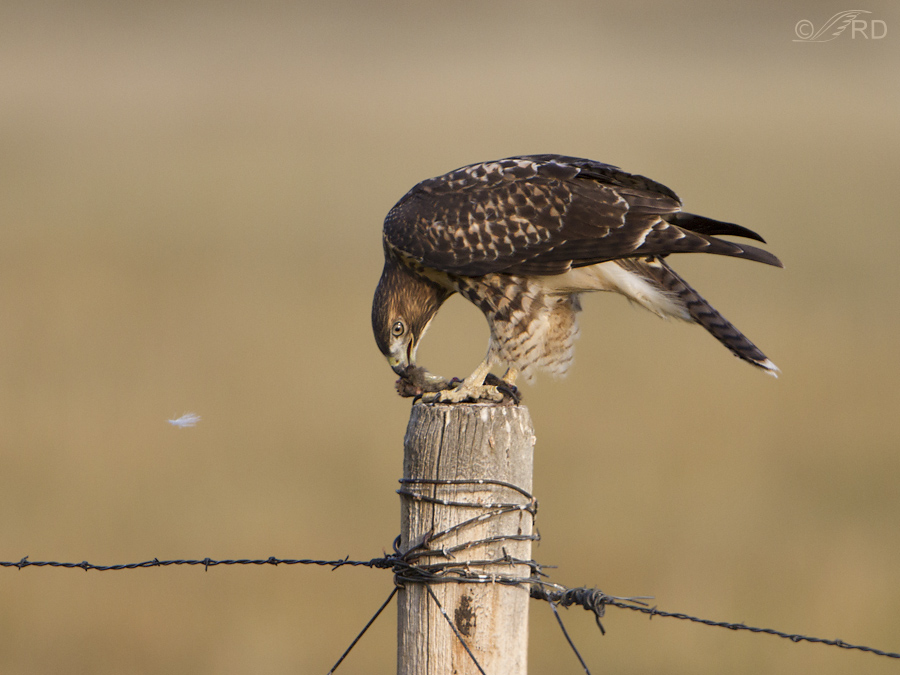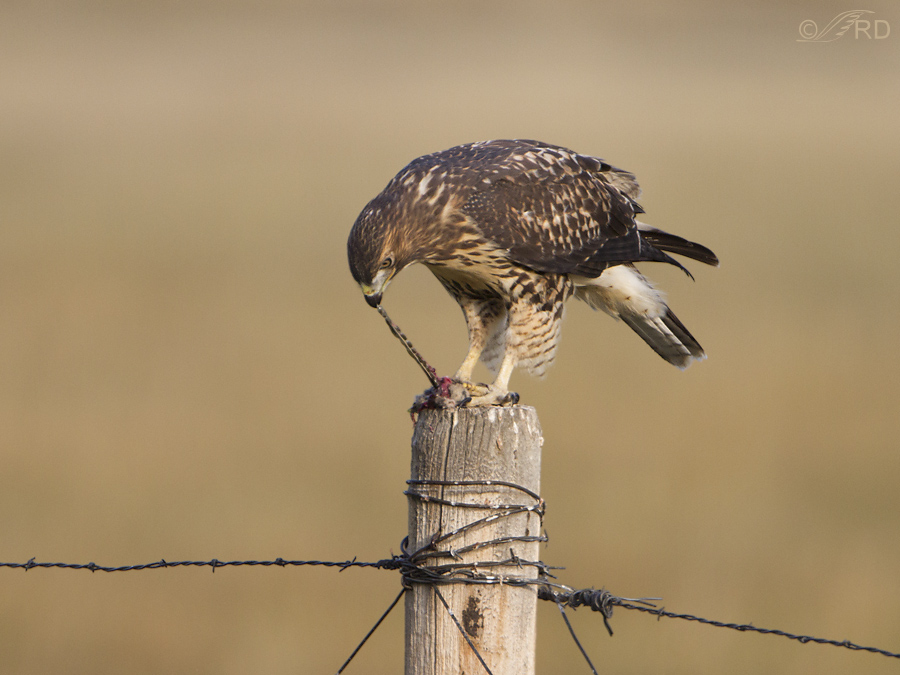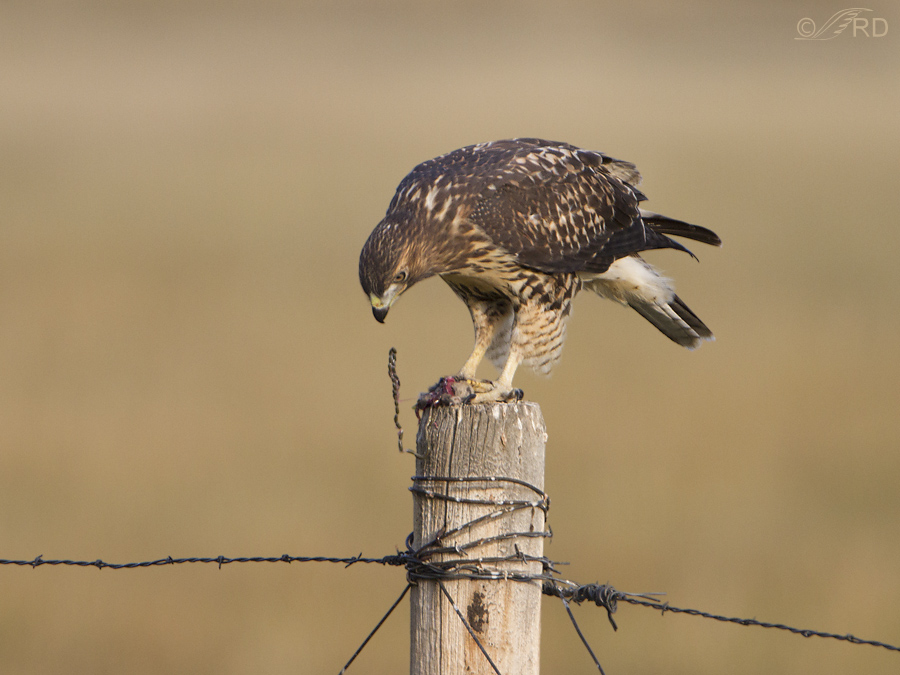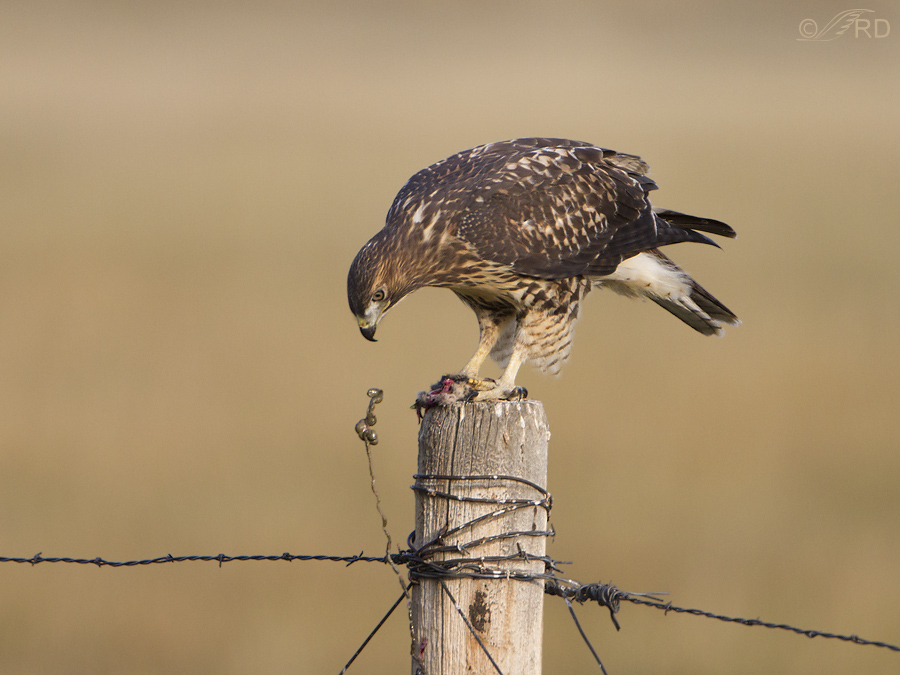Many raptors will methodically and deliberately remove the intestinal tract of their prey before consuming it, a behavior that I’ve photographed several times with different species. In my research I’ve never been able to find out exactly why this is done – there are multiple theories but apparently no definitive answers.
Maybe they tend to reject them because they “taste bad”, or because they “harbor harmful bacteria” or because they are filled with contents that are of “low food value”. Perhaps it’s a combination of factors.
Recently, to add to the confusion, I’ve come up with my own working theory. The intestines of vertebrates, particularly mammals such as the rodents that many of these raptors regularly prey on, tend to be infested with a variety of parasites – including worms such as intestinal roundworms, flukes and tapeworms. The life cycles of many of these parasites are convoluted and complex but some of them lay thousands of eggs into the hosts intestinal contents every day. Eating those contents could have unpleasant consequences for predators so it seems logical to me that selection pressure might preserve such a behavior.

1/1000. f/5.6, ISO 640, 500 f/4, 1.4 tc, natural light, not set up, baited or called in
While I was in SW Montana a few weeks ago this juvenile Red-tailed Hawk flew to a nearby post with a vole and started to eat it. It began by opening the vole and then removing and swallowing several desirable morsels. Here you see an errant feather floating away in the breeze.

1/1000. f/5.6, ISO 640, 500 f/4, 1.4 tc, natural light, not set up, baited or called in
But then it paused for a few seconds, seeming to study the innards of the vole, and then reached into the carcass and began to pull out a section of the small intestine…

1/1250. f/5.6, ISO 640, 500 f/4, 1.4 tc, natural light, not set up, baited or called in
which it very deliberately dropped to the ground.

1/1000. f/5.6, ISO 640, 500 f/4, 1.4 tc, natural light, not set up, baited or called in
Then it reached in again and this time it pulled out the rest of the small intestine, with the large intestine attached, and rejected that also.

1/2000. f/5.6, ISO 640, 500 f/4, natural light, not set up, baited or called in
When the entire intestinal tract had been discarded the hawk consumed the rest of the vole. I assumed it would soon fly off so I removed my tc in preparation for take-off shots but the bird went in to “relax mode” for quite a while and gave me this “leg sticking out with foot clenched” pose that is so typical of many raptors at rest.

1/1250. f/5.6, ISO 500, 500 f/4, 1.4 tc, natural light, not set up, baited or called in
Perhaps it felt like I do after a meal (lethargic) because it stayed on the post for quite a while, allowing me to get closer and attach my tc for a few portraits.
This intestine rejecting behavior of raptors is something I’ve documented before with an American Kestrel and a Peregrine Falcon, if you’re interested. But be forewarned, both posts are graphic.
Ron


Hello!
Thank you for sharing this article. I am an elementary school teacher and I shared this article and beautiful pictures with my students. Reason being that for the second time, we have stumbled across cat that had been dismembered. A clean cut head, legs and tail, and most fascinatingly, the intestinal track clean and seperated from any part of the animal. We found it odd (creepy), so I researched and stumbled upon your article. These hawks have been seen in our area, so now it makes more sense. 🙂 Is it common that they would go after stray cats?
Thank you for the insight… My students are looking forward to capturing a glimpse of this beautiful bird.
Mari, I would be quite surprised at a Red-tailed Hawk preying on an adult domestic cat. I suspect the hawk would pay a dear price for that and would instinctively avoid such an encounter. To me it sounds like the predator of the cat might be a larger mammal (speculation on my part of course). Another possibility might be a Great Horned Owl – ferocious predators who often take larger prey.
I very much hope your students get a good look (or two) at a Red-tailed Hawk soon. They are simply wonderful birds.
I love your shots… Every one is absolutely stunning, and wonderfully educational. This is particularly great. 🙂
Nice Series.
Thanks Earl.
Comment from two of my grandchildren: “Ooooh, Grandpa…gross!”, followed by “Can you show us more pictures like this?”
Wonderful. Thanks, Ron, for another lesson in natural history.
Dick, Thanks for letting me know that your two grandkids enjoyed the photos, for whatever reason. Who knows what it could spark, down the road.
On a related note, I visited my old high school today (where I taught biology and zoology for so long) for the first time in quite a few years. I ended up in front of a class (long story how that happened but it was spontaneous), talking about birds, behaviors and answering questions about photography and why I love doing what I do, with some of my blog photos on the screen behind me. Reminded me of how much I used to love the classroom.
Wonderful images and your theory makes sense to me. I have found many birds to be more intelligent than most people give them credit for.
It’s just that, a theory Jim and it seems logical to me. But who knows…
I absolutely love the subject matter. Again you are giving glimpses to something often overlooked or unseen. I don’t know if I have mentioned this before Ron, but one of the main reasons I find your photography so stunning is the role color plays in your photographs. Love my days off being able to check in and see what successes you’ve found again. Keep it up!
Thank you Bryce. Your comment about color means a lot because, unless the photo was taken in very low light, I don’t add any saturation or contrast to my images since I prefer the colors to be natural. I’ll take natural over “popping colors” any ol’ day of the week.
I would think that acidic, mushy intestinal contents would be reject purely on the basis of its nature as are skin and feathers.
Greaty photography bud!!!
Thanks Markie. I know that I’d personally reject the contents on the basis you mention but in reality, as soon as the food hits the intestine from the stomach, the acids are neutralized by bile, pancreatic juice and intestinal juice – all three of which are alkaline. And many of these raptors eat the skin of mammal prey – this red-tail ate skin, fur and everything else but the intestines.
I find it fascinating. I think your theory has a lot of merit. Many animals will reject food which is going to be ‘bad’ for them. And worm/pasasite infected intestines would have to come under that heading. Thanks Ron. I have seen many small boys who eat in a manner which is probably much grosser tha the methods used by the Red-tailed Hawk.
Many moons ago I was one of those “small boys” that you refer to Elephant’s Child!
Hmmmm, not exactly breakfast reading fare, but very interesting none-the-less. Thanks again for an informative entry.
Thanks Tana, hope it didn’t put you off your morning repast…